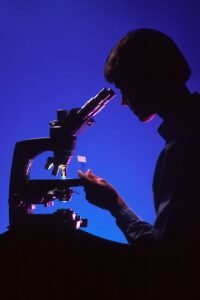Cancer does not appear out of nowhere. Although genetics has an influence, many cases are related to external factors and daily habits. Knowing them is key to prevent them. Here are the main causes that increase the risk of cancer, according to science.
🚬 1. Tobacco and electronic cigarettes.
Tobacco is the leading preventable cause of cancer in the world. It not only causes lung cancer, but also mouth, throat, bladder, stomach and pancreatic cancer.
Even second-hand smoke (passive smoking) can be harmful.
E-cigarettes are not innocent either: many contain toxic and carcinogenic substances.
🍷 2. Excessive alcohol consumption.
Frequent or heavy drinking is associated with cancers of the liver, mouth, esophagus, breast and colon.
The higher the consumption, the greater the risk. There is no “safe” amount of alcohol for health.
🌞 3. Excessive sun exposure.
Ultraviolet (UV) rays from the sun or tanning booths can damage the DNA of skin cells and cause melanoma or other types of skin cancer.
Wearing sunscreen and avoiding peak radiation hours is essential.
🍔 4. Unhealthy eating.
Diets rich in processed meats (such as sausages, bacon or sausages), sugars, saturated fats and ultra-processed foods increase the risk of several types of cancer, especially colon and stomach cancer.
A diet rich in fruits, vegetables, legumes and whole grains helps to prevent it.
☢️ 5. Radiation and exposure to toxic substances.
Prolonged exposure to ionizing radiation (such as uncontrolled X-rays) or radioactive materials (radon, uranium) can cause cell damage.
Also contact with chemicals such as asbestos, benzene, arsenic or lead increases the risk of occupational cancer.
⚙️ 6. Environmental pollution.
Air pollution, especially fine particulate matter (PM2.5), has been linked to lung and other cancers.
Living in large cities or near industrial areas increases exposure to these compounds.
⚕️ 7. Infections and viruses.
Some viruses are directly related to certain types of cancer:
- Human papillomavirus (HPV): cancer of the cervix, throat or anus.
- Hepatitis B and C: liver cancer.
- Epstein-Barr virus: lymphomas and nasopharyngeal cancer.
Vaccination and medical control help to reduce these risks.
💊 8. Prolonged use of some products or drugs.
Some hormonal drugs, pesticides, industrial dyes or cosmetic products containing substances such as formaldehyde or parabens can be potentially carcinogenic if used uncontrolled or in large doses.
🛋️ 9. Sedentary lifestyle and obesity.
Lack of physical activity and excess weight are related to several types of cancer, such as breast, colon or pancreatic cancer.
Regular exercise helps maintain a healthy weight and improves the immune system.
😴 10. Chronic stress and lack of sleep.
Although stress alone does not cause cancer, it does weaken the immune system and encourages unhealthy habits (smoking, eating poorly, drinking alcohol), which can increase the risk in the long term.
🧴 11. Household chemicals.
Some cleaning products, air fresheners, paints and solvents contain volatile organic compounds (VOCs), formaldehyde or benzene, which in continuous exposure can increase the risk of respiratory or liver cancer.
Using environmentally friendly versions and ventilating spaces well helps to reduce exposure.
🧂 12. Excess salt and very salty foods.
High consumption of salt or cured foods (such as dried fish or pickles) has been linked to an increased risk of stomach cancer.
Reducing salt and preferring natural seasonings is a simple preventive measure.
🧬 13. Genetic predisposition.
Some people inherit mutations in certain genes (such as BRCA1 or BRCA2) that increase the risk of breast, ovarian or colon cancer.
Knowing the family history and performing genetic testing in at-risk cases can help in early detection.
🧪 14. Hormonal therapies without medical control.
Long-term unsupervised use of hormones (such as menopause treatments or anabolic steroids) can increase the risk of breast, uterine or prostate cancer.
They should always be prescribed and monitored by a specialist.
🌙 15. Constant nocturnal exposure to artificial light.
Working at night or sleeping with lights on alters the production of melatonin, a hormone that protects cells from damage.
Some studies link chronic exposure to nighttime light to an increased risk of breast and prostate cancer.
Do you want me to combine everything into a complete revised article with title, introduction and final conclusion ready to publish on your website (e.g. newscurrently.com)? I can do it in SEO optimized journalistic format.
🍳16. Cooking at high temperatures (frying or grilling)
When meat or fish is grilled or fried at high temperatures, substances called heterocyclic amines and polycyclic aromatic hydrocarbons, which can be carcinogenic, are generated.
Using gentler methods, such as steaming or baking, helps reduce the risk.
🧠 Conclusion.
Preventing cancer does not mean living in fear, but with awareness and balance.
Adopting healthy habits – not smoking, eating well, moving more and having medical check-ups – can reduce the risk of suffering from cancer by up to 40%, according to the WHO.
Taking care of your body today is the best investment for your future health. 💚


